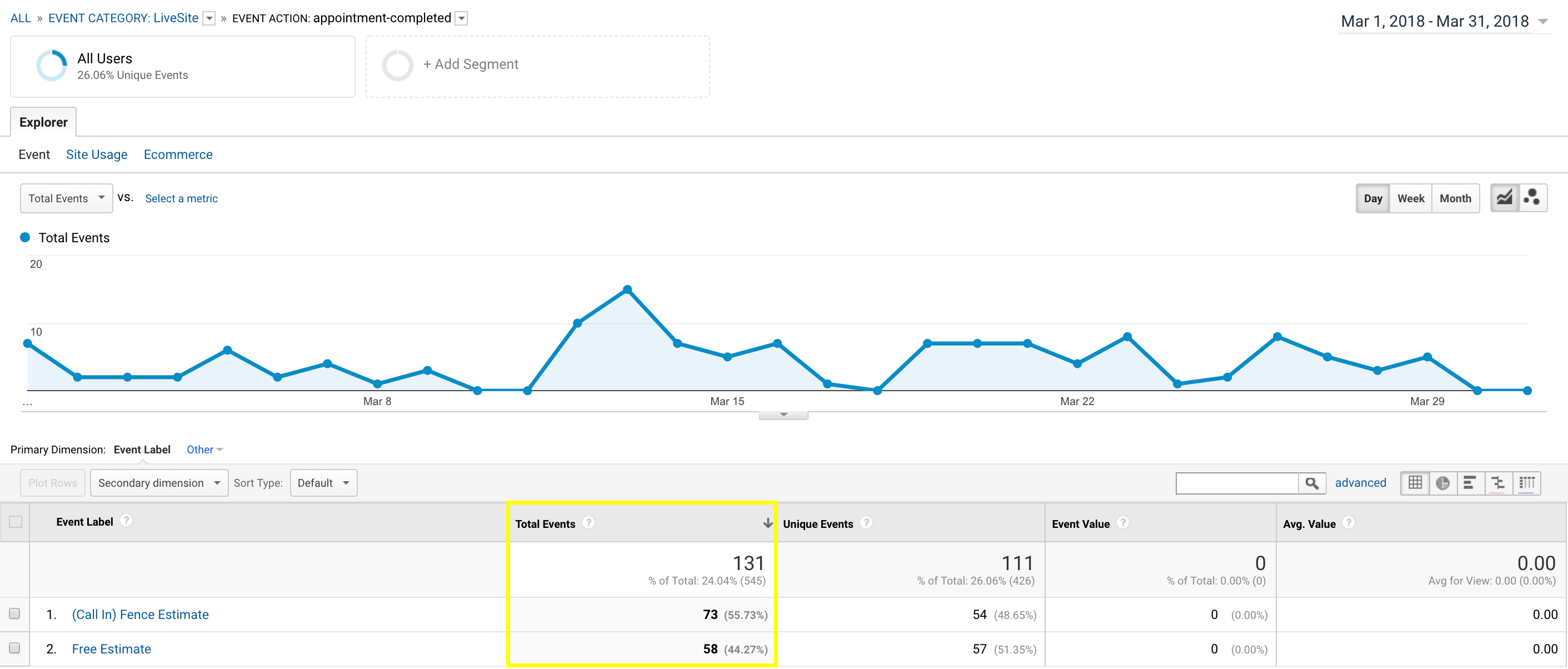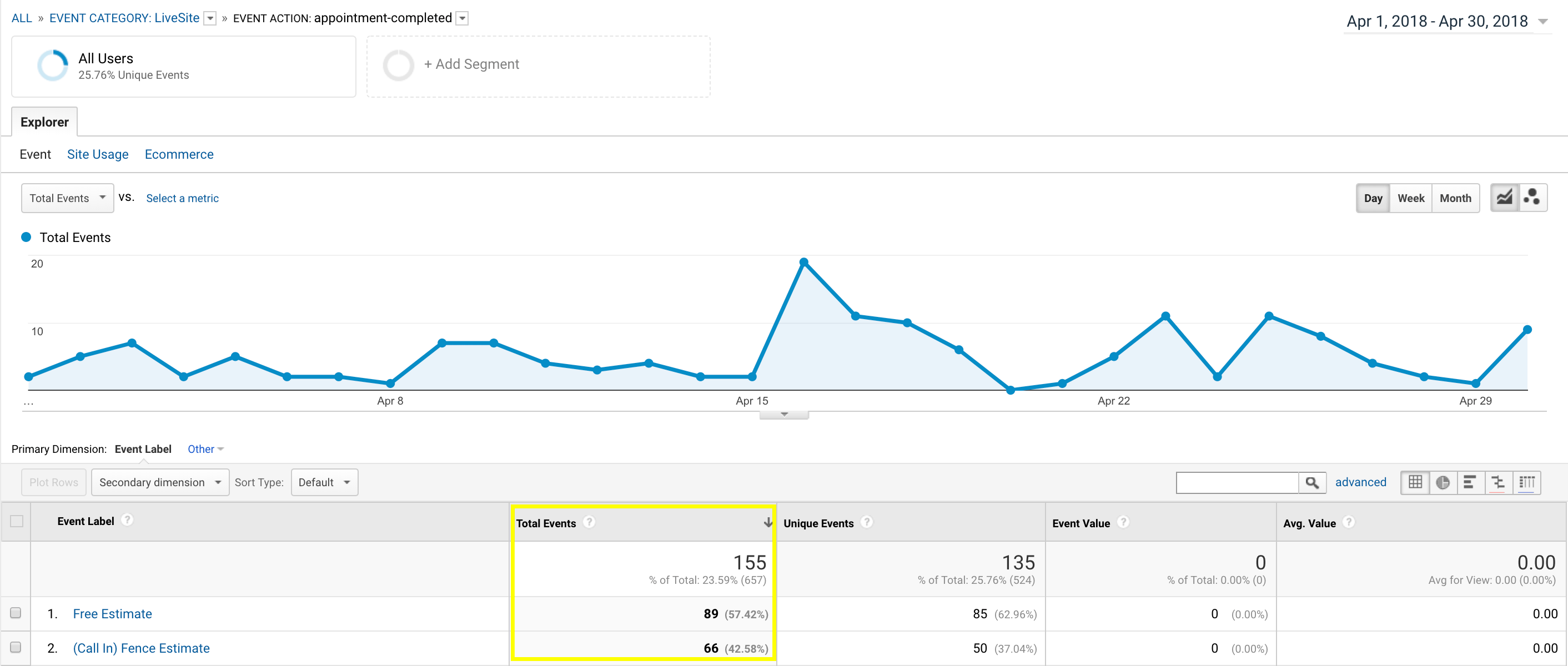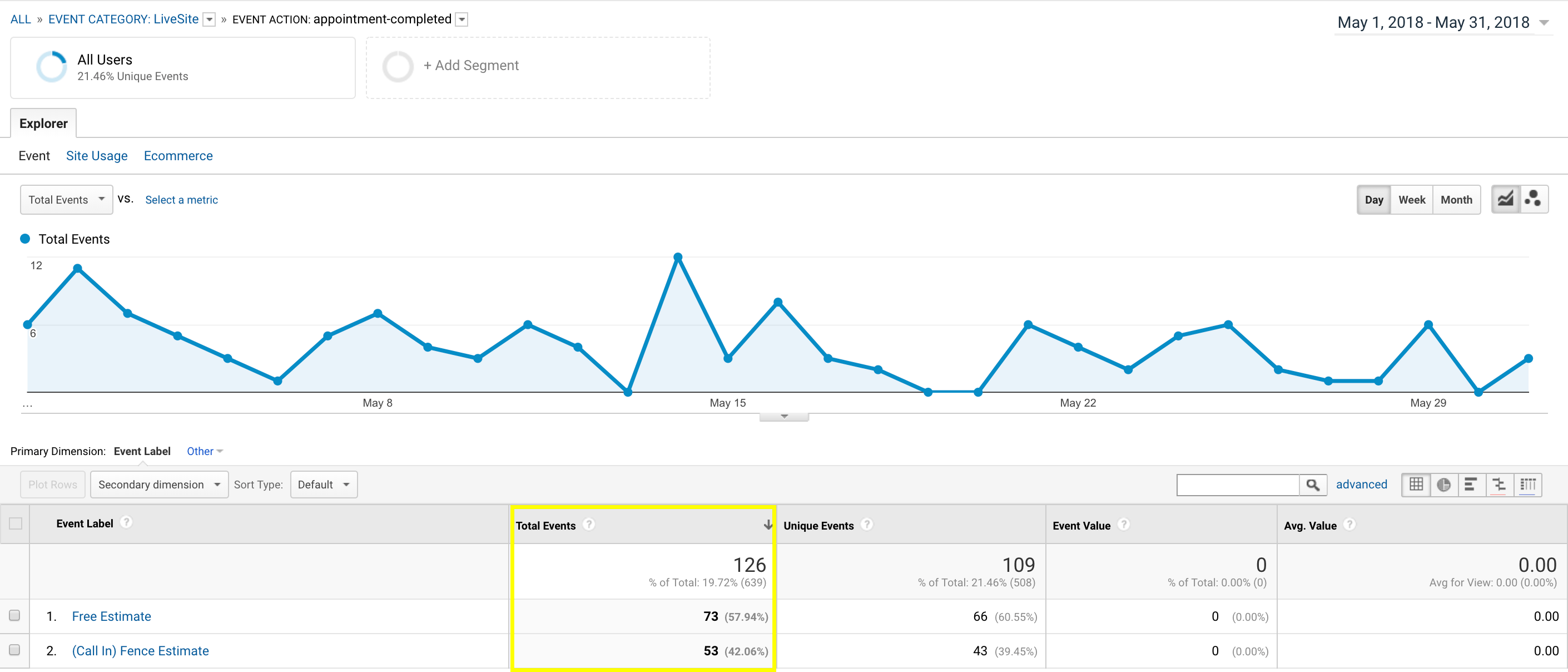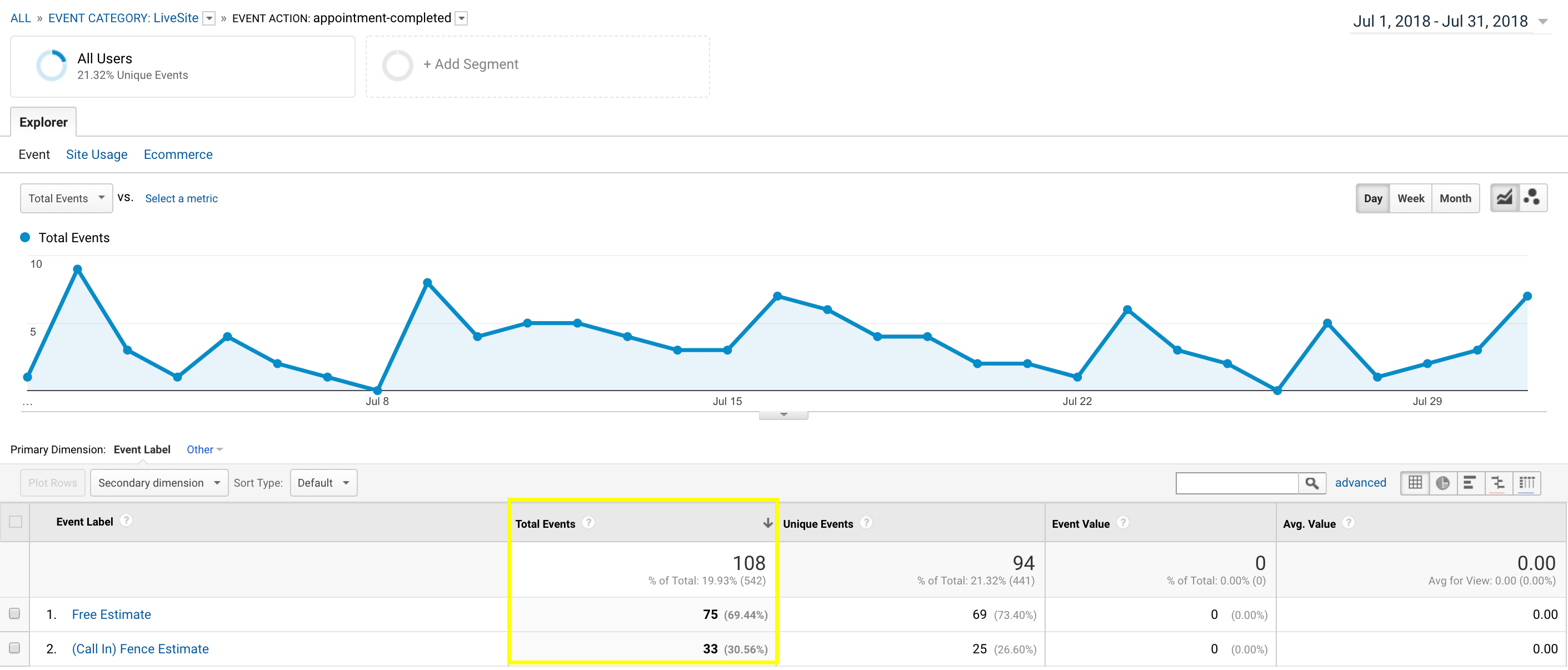INTRODUCTION
Let us start by expressing that the successes we have had and will have with Peak Fencing are heavily due to Mark, the CEO and owner of the company, and his willingness to hear new ideas, invest in change, and adapt to a new process that accompanies higher conversions and workload. One of the most important qualifications of a successful client is their ability to recognize the potential of a new idea, and is willing to work together in executing a strategy.
HOW WE ACQUIRED PEAK FENCING AS A CLIENT:
This project came to be when one of our website design teams, Whiskey and Red, was looking for a fence company to install a cedar fence around their new Woodland Park, CO property. They naturally turned to Google to find the best of the best fence companies in the area. (Peak Fencing was currently on the 3rd page.)
After multiple unprofessional experiences and negative interactions with the fence contractors ranking on the first pages of Google, they came across Peak Fencing. Within a week they had an estimator out to their property and a day later, they had a proposal in hand. With such a great process and positive experience, why was Peak Fencing so hard to find? Why did it take multiple negative experiences with multiple fence companies before finally receiving a positive experience?
Initial Standing:
Peak Fencing was almost entirely unfindable organically (through search engines). They relied heavily on third-party companies like Angie’s list and other directories in order to be found online (Keep in mind, each one of these directories are pay per lead regardless of if they get the job), as well as their long-standing reputation in the Colorado Springs area.
Their website at the time had some “room for improvement” in regards to its looks and optimization. It also created a user experience that required multiple interactions before an estimate was scheduled.
Before
After
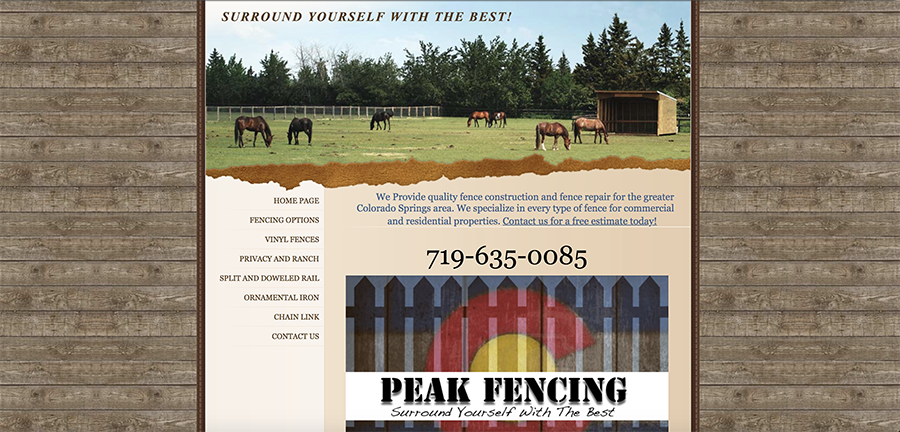
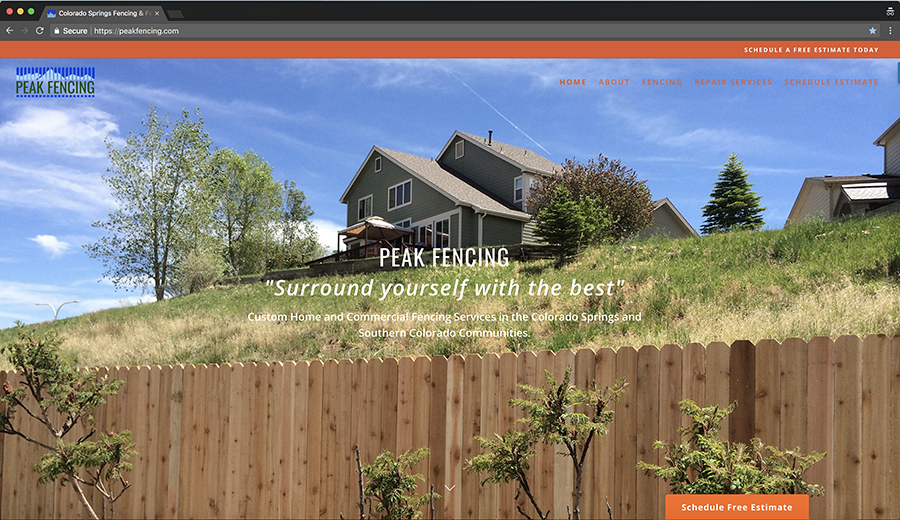
Solutions
Problem Number 1:
The website was not being found organically by searchers looking for fencing services through google, bing and other related search engines.
Solution:
If you study the website layout you will find that it characterizes each fence type (their services) on individual pages with organized, high-quality images accompanied by relevant file names, alt text, and individual keyword infused URL’s.
Each page has been optimized using an arrangement of SEO objectives including Alt txt, meta descriptions, schema markup, and heading structure.
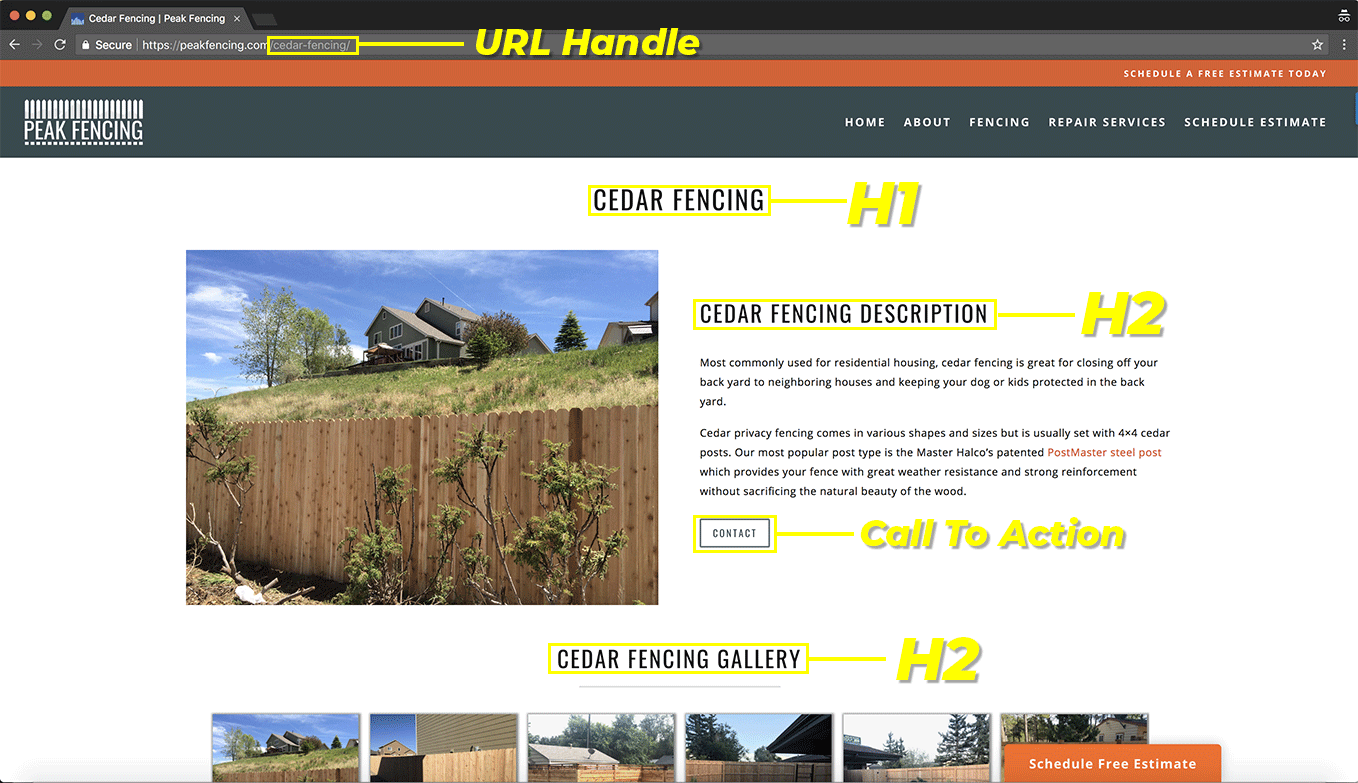
All of these features were implemented to help the search engine rankings of peakfencing.com as well as to help “manage the expectation of the potential client” who might be looking for a particular service.
Beyond the layout and structure of the website, we strategically placed clickable calls to action that directed visitors toward making a decision.
We also included tags using Google Tag Manager to track the button clicks- and see which ones were working and which ones needed to be adjusted.
The follow up to all this is the continuous SEO process. This involves research and outreach for backlinks, constant directory management and updates, review process implementation and management, as well as continuous keyword research and on-site content management. All of this to make sure we reach the top of search results and stay there.
Within about 3 months, we had peakfencing.com at the top of search on Google and other search engines for key terms like fencing, fence builder, fence contractor, fence repair, etc. in the Colorado Springs area.
We were ranking above home advisor and other directory sites with those pesky “top 10” pages. As a result, the traffic exploded and direct website contact form submissions tripled from about 4-5 a month to 4-5 a week.
Problem Number 2:
The other issue was ease of use or, as it’s more commonly referred to in the digital world, the user experience (UX). We wanted to create an experience for the potential client that made the fence contracting process streamlined and easy.
Solution:
The most important factor when tracking and changing pieces of content on the site is how the client identifies a conversion. When we first began working with Peak Fencing, a conversion was defined as a contact form submission, which then translated into a free estimate.
Knowing this, our number one priority was to drive as much traffic to the contact page and track the results.
The results of our tracking were concerning. Although we were getting more contact form submissions than before the website re-design, the traffic to conversion ratio was extremely skewed. Only about 3% of traffic making it to the contact page was completing the full contact form and submitting. We even tracked how far down the form visitors were getting before leaving the page.
The solution was to find a way to make it easier for visitors and potential clients to schedule a fence estimate. Ideally, they would be able to schedule the estimate strait from the site using a calendar with available timeslots. No phone call needed and they can pick a time that works best for them.
Customer Profile + Workflow Streamlining
We created a near perfect solution to some issues we weren’t even focusing on at the time. The first one was customer profiles. When a potential client fills out the “schedule your estimate” form they include the necessary information for the estimator prior to the estimation date. This information get’s saved on a profile that allows us to track client preferences, highest volume by location, most desired fence, seasonal fluctuations in preferences, and so much more!
It was the first time we’ve been able to track this information and create marketing strategies around the results. We can never stress enough the importance of tracking analytics to make better marketing decisions.
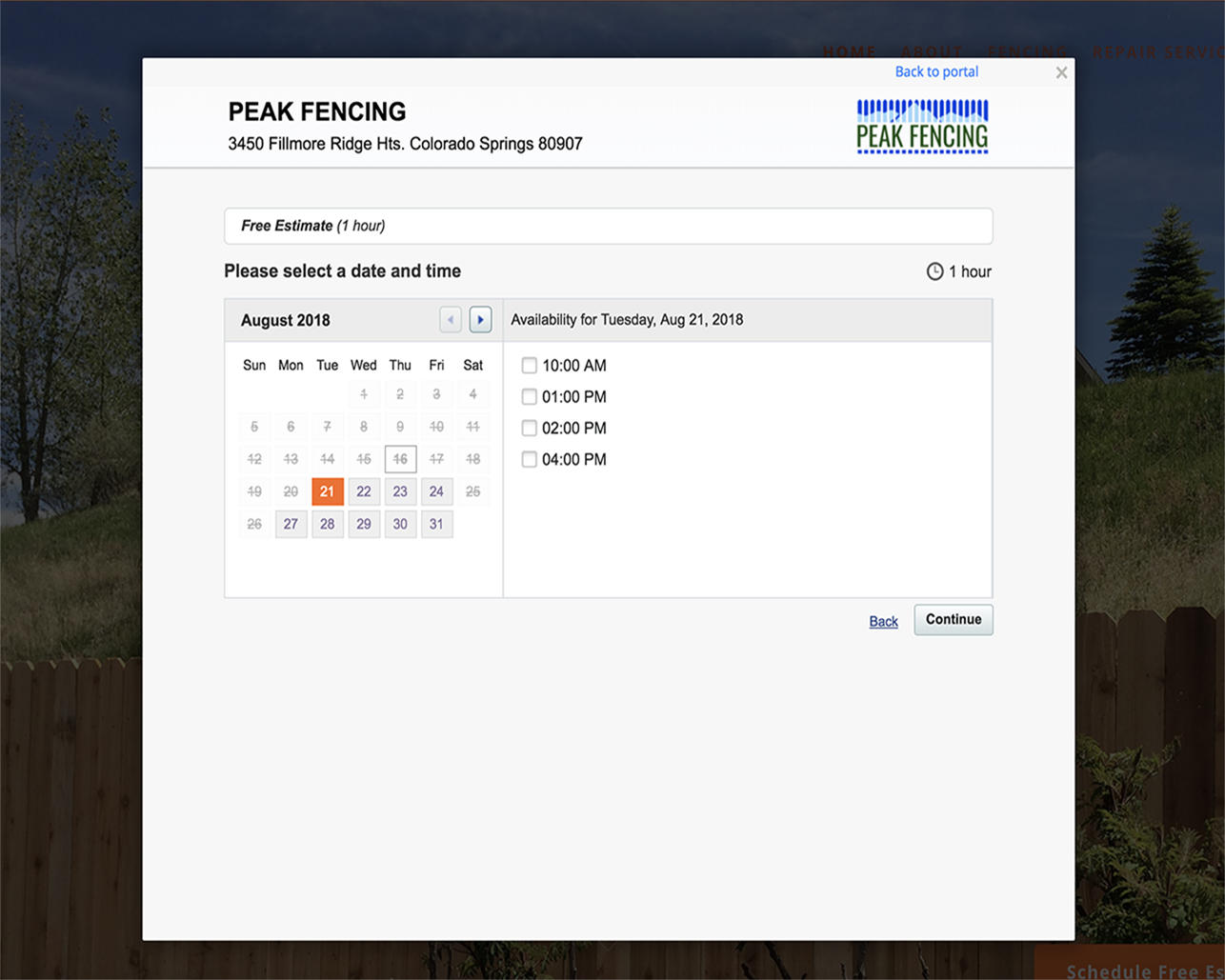
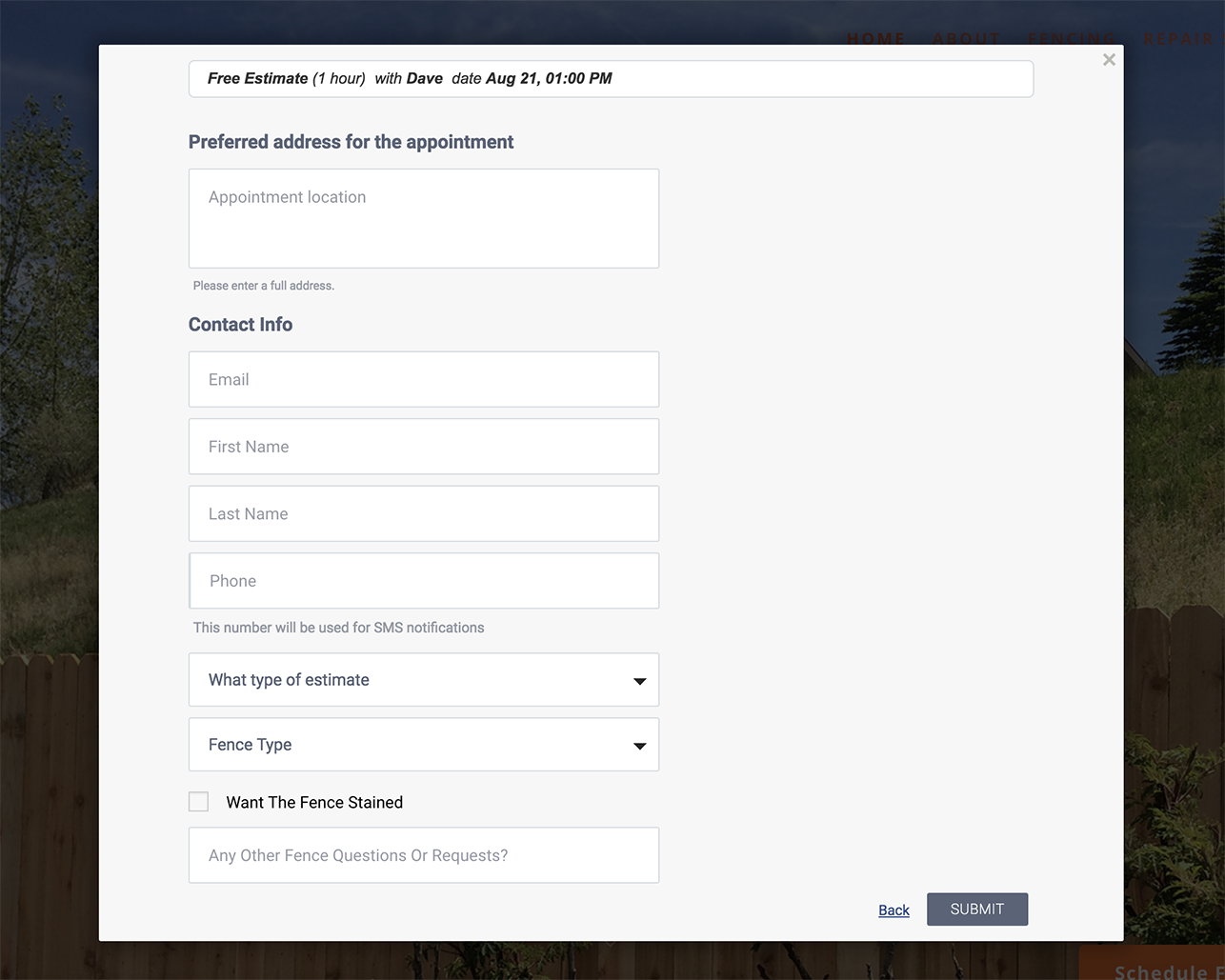
Results
The conversion results have been incredible. By allowing visitors to schedule their own estimate, we eliminated the multiple step process when getting their estimate scheduled. This free’d up time for both the client as well as internal administration.
March - July Estimates Scheduled
Next Steps
With all this new data comes a lot of responsibility. By utilizing a new CRM (Client Relationship Management) software, we have the ability to organize a replicable process that can be followed every time a client enters the workflow.
Here is our workflow plan from start to finish:
Phase 1: Estimate
A. Potential client schedules an estimate and a client profile is created in our client relationship management (CRM) software.
B. Estimator arrives at the location on the specified date and carries out the estimate process.
C. With the required information acquired during the property analysis, a proposal is generated and delivered to the client through the CRM.
D. The client receives the proposal via email and has the option to approve or not approve the proposal directly on the proposal itself via an approval button.
E. Once the client approves the proposal, the next phase is initiated.
Phase 2: Fence build
A. Once the client approves the proposal, a project start date is automatically generated through the CRM and Peak Fencing builders are assigned to the job.
B. A work order is also generated based on the materials indicated in the proposal.
C. Once the work order is generated, inventory is automatically updated to keep full visual transparency on in stock and low stock materials.
D. Email reminders are automatically sent to the client indicating the date, time, and necessary preparations.
E. Builders arrive on location and carry out fence installment process.
Phase 3: Project Completion
A. Once the project is complete, an invoice is automatically generated based on the approved proposal as well as any additions included during the installation process and is sent to the client.
B. The client has the ability to pay directly from the proposal through the CRM.
C. Once the client has paid, client relationship phase is automatically initiated.
Phase 4: Relationship Management
A. Pictures are taken of the install for the online portfolio as well as for our social media marketing efforts.
B. An email is sent to the client two business days after the completion of the project thanking them for their business and requesting feedback as well as referrals.
C. The client will receive emails with information on how to manage and care for their fence depending on upcoming weather conditions and seasonal changes.
D. Every 6 months and 1 year, the client will receive a follow-up email about their new fence ensuring that we exceeded expectations and are available for continued support.

